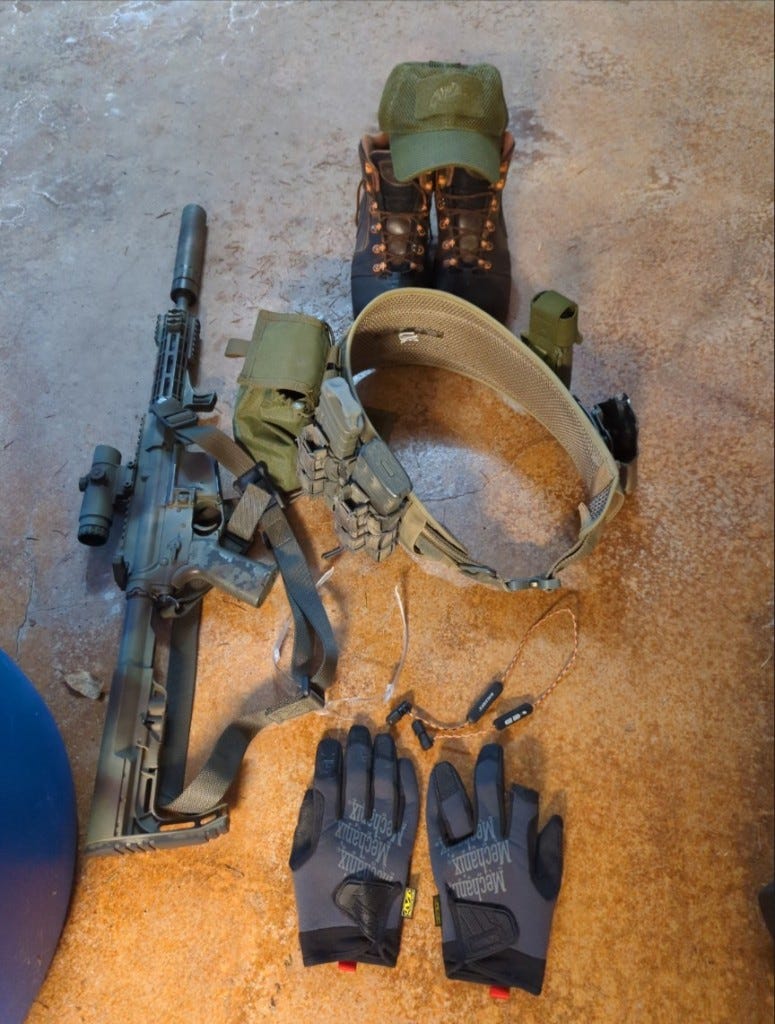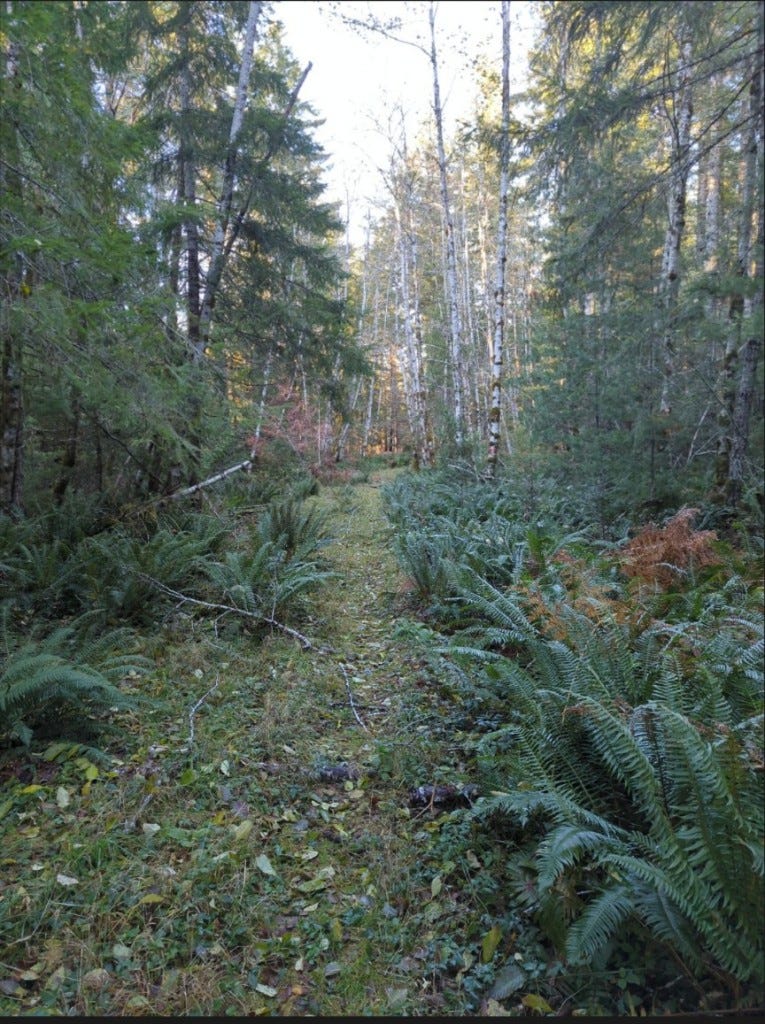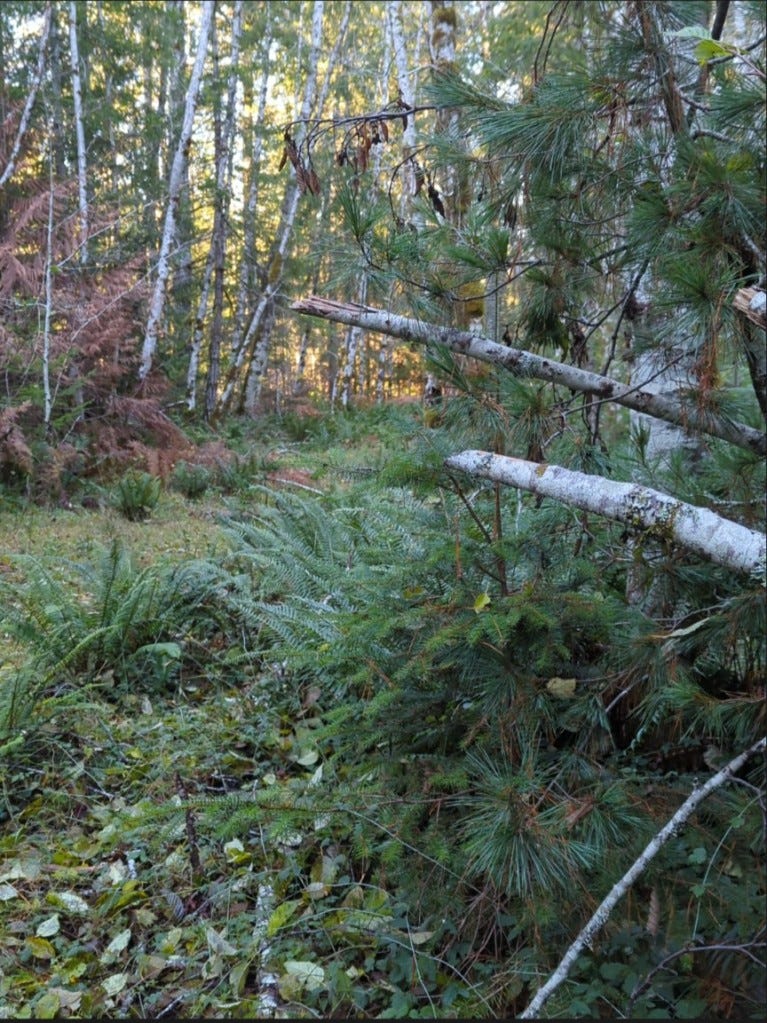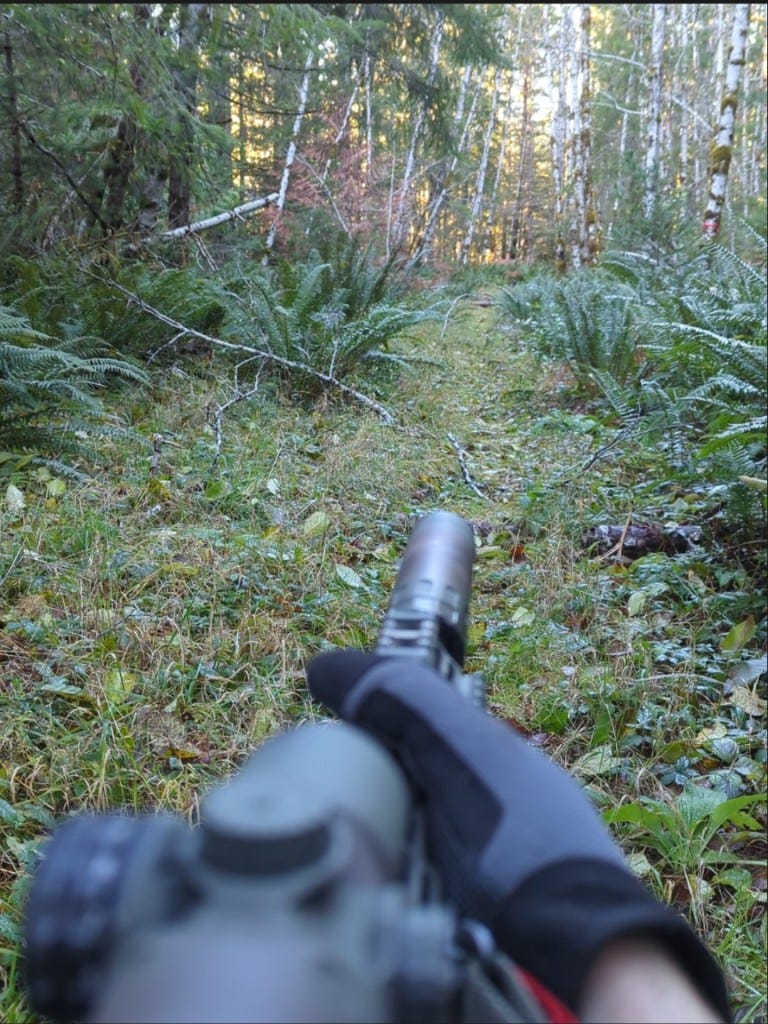Training: He who conquers himself is the mightiest warrior
It's been said that "Your success is based off the amount of times you do something you don't want to do". And training is, quite often, something that you will not feel like doing yet is crucial to reach your goals.
The best training will challenge you physically and mentally. The best training will build skills and capability as well as strength. To that end I wanted to share a drill that I do which accomplishes all of these, in the hope that others might be inspired to get out and do things that they might not WANT to do, yet need to do.
This drill combines strength training, cardio, situational awareness, positional shooting, and a lot more. The number of ways you can tailor this drill to fit your situation are only limited to the bounds of your imagination, I never do it exactly the same way twice, and anyone with a safe place to shoot and move can vary this to their unique circumstances.
This is what I did today.
Starting exercise with heavy compound lifts is a potent way to burn fat and build muscle. You body is lazy, and it was designed that way for a reason. Being lazy makes you more likely to survive a famine, as well as conserve energy that can be used to escape danger. Being lazy makes the first 20 minutes of exercise you do also burn through the glucose in your blood instead of tapping into precious reserves (fat) which limits the utility of a lot what you see people doing at the gym. That's why starting with heavy lifts which will sap the glucose from your system while strengthening your body makes the high intensity training you do after that burn more fat as well as force you to become accustomed to physical duress while in a depleted state, which increases the likelihood of being mentally fit as well as physically competent in a survival situation. And that's why I started out with 4 sets of squats followed by 4 sets of bench press.
Following that, I doffed the workout shorts and shoes, donned pants and boots, a fleece, the belt I run for multigun competition and loaded the rifle.
Now it's on to a trail run, the wet brush quickly soaked through the pants from the thigh down on this 45 degree November afternoon, but the cool air countered the heat that rapidly built during the run. The trail to my shooting area begins about 50 feet from the outbuilding I use for a gym, and weaves through the forest, with a log bridge over a stream, fallen logs to jump and climb over, and an undulating forest floor to catch your feet for approximately 1/3 mile. I jogged quickly, yet as quietly as I could while maintaining awareness of my surroundings and covering lines of sight with the rifle as I ran. The trail then turns left onto an old road grade, and where it opens up into a 200 yard straightaway of range space.
At the end, there is a camouflage painted 8" steel plate on a tree. Targets in the real world generally try to hide themselves so finding your target should play an important part in your training as well.
As I approach the 40 yard marker, I pause to catch my breath. A minute or so rest to calm the lungs and for the briefest of SLLS (Stop, Look, Listen, Smell) before I begin.
From the 40 yard line I sprint up to the 20 yard marker, drop down to the ground and adopt a hasty position bracing the rifle off the forearm of my off hand as if shooting under an obstacle like a vehicle. This is also a shooting position where I underperformed during a recent match, where they forced us to shoot through a port that was placed just too high for prone, yet too low for a good kneeling position.
As soon as 2 hits are earned, I sprint uprange back to the 40 yard mark, where I engage standing from concealment.
Another 2 hits earned and its time to sprint again uprange to the 60 yard mark when 2 hits from a hasty supported kneeling position ends the repetition.
From there, I allowed about 2 minutes rest while I walked back the the 40 yard mark and got ready to begin again.
3 rounds of this drill in the cool November air and it was time to head back. 19 rounds (I had one miss) was a lot of training value for not even a full mag. The run back seemed easier, probably due to the knowledge that this was the last leg, and I arrived at the head of the trail with pants soaked from the waist down with water from the ever present salal on the forest floor, and base layers working double time to wick away the sweat from my skin.
AAR
Sustain: As mentioned above, the format provides for endless variation. This iteration did what it needed to do and as I write this I still feel the endorphins from the exertion, but also an ache in my neck and shoulders from the effort and most likely the running at high ready. The run began to feel like a slog in my depleted state when I finally arrived at the shooting area, and breath was quickly in short supply during the sprints between shots, which feels awfully familiar from the "brutality" matches I have shot over the last year. I was surprised on a number of trigger pulls to hear the clang of steel after feeling the break while aiming at a brown mass that I was only moderately confident to be the steel target. The camouflaged target also introduced an element of panic as I tried to pick the alder tree bearing the target out from those that did not, and then tried to see the round shape of the steel amid the moss and lichen on the bark. (The photos above all include the target, so you can see for yourself how well it blends in) This uncertainty and urgent need to see effectively replicated, in a small way, the uncertainty of finding a threat camouflaged into the surrounding terrain.
Improve: The time taken to identify the target felt unacceptably long, though the hits were there once in my sights. With repetition I hope to become better at "seeing" that subtle difference in shape, shine, and texture to pick out a target from its surroundings. Introducing (and this would take a partner) time pressure into the shooting positions, such as a 3 or 5 second par time once the position is assumed, would also create an enormous amounts of stress to see and hit rapidly. Improved props at the shooting positions to define the height or port from which shooting must take place would also be beneficial, as that would better replicate real world shooting positions during a life or death encounter.
In closing I ask: how can you, taking into account your unique situation, take this idea and design a way to train your body, mind, and skills to become more capable and dangerous? And once you have put those plans to paper, can you do something that you might not WANT to do given the stress and effort required, knowing that in doing so you will become more successful in meeting your goals? If so, I'd love to hear about it.









